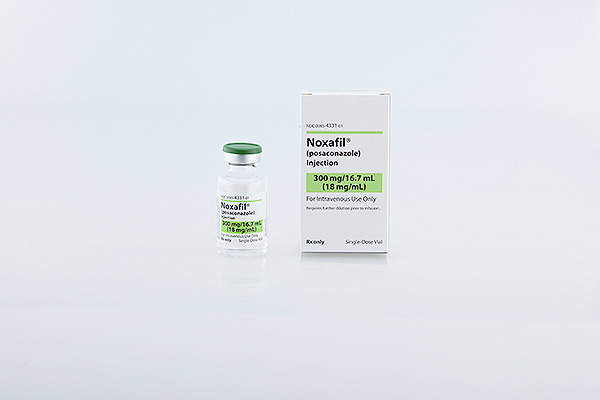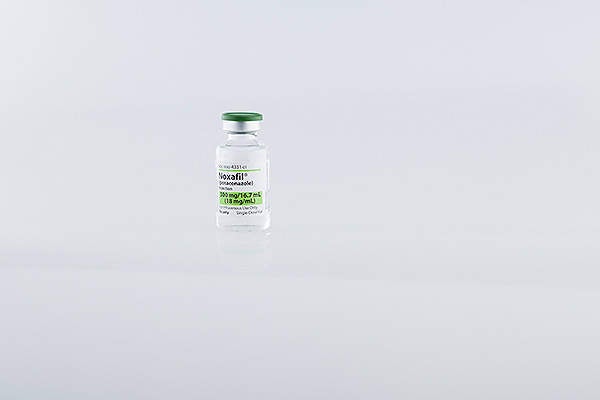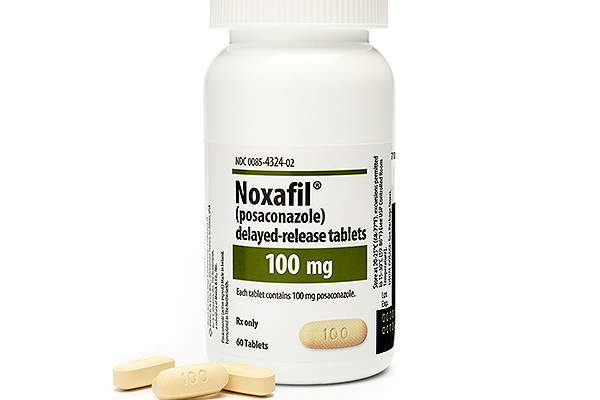Noxafil (posaconazole) is a triazole antifungal agent indicated for treatment of the prophylaxis of invasive Aspergillus and Candida infections. The drug was originally developed by Schering-Plough, which merged with Merck in 2009.
Merck received US Food and Drug Administration (FDA) approval for Noxafil intravenous injection formulation for the treatment of invasive Aspergillus and Candida infections in patients of 18 years of age and older in March 2014. Merck received approval for Noxafil 100mg delayed-release tablets and oral suspension for the treatment of Aspergillus and Candida infections in patients of 13 years and older in November 2013.
Merck also obtained positive opinion from the Committee for Medicinal Products for Human Use (CHMP) of the European Medicines Agency (EMA), recommending approval of Noxafil investigational tablet across Europe in February 2014.
Treatment of fungal infections
A new intravenous cephalosporin antibiotic indicated for the treatment of serious skin infections.
The fungal infections are very common and can be observed in most immunocompromised patients, especially leukaemia patients. Candida and Aspergillus species are the most common fungal pathogens responsible for infection.
Noxafil’s mechanism of action
Noxafil contains an active triazole antifungal drug substance called posaconazole, which stops the growth of fungi by blocking the synthesis of ergosterol, a key factor of the fungal cell membrane. The drug also inhibits the accumulation of methylated sterol precursors.
Noxafil is available for intravenous use as well as for oral administration and is available in 100mg delayed-release tablets, 40mg/ml oral suspension, and 18mg/m injection forms.
Clinical trials of Noxafil
The FDA approved Noxafil intravenous (IV) formulation in March 2014 for treatment of the prophylaxis of invasive Aspergillus and Candida infections in high-risk patients. Patients were administered with Noxafil loading dose of 300mg (one 300mg vial) twice a day on the first day of NOXAFIL therapy, and then 300mg (one 300mg vial) once a day thereafter.
Adverse reactions found in the Noxafil IV group patients were similar to those reported in Noxafil oral suspension group. The most commonly reported adverse reactions in the 300mg once-daily dose therapy included diarrhoea, hypokalemia, fever, and nausea.
FDA approval for Noxafil 100mg tablets was based on a non-comparative, multicenter pharmacokinetic clinical trial that evaluated the safety and tolerability of Noxafil delayed-release tablets in patients with acute myeloid leukaemia (AML) or myelodysplastic syndrome (MDS).
Patients were administered with a 300mg (three 100mg delayed-release tablets) once-daily dose of Noxafil delayed-release tablets, followed by a 300mg (three 100mg delayed-release tablets) twice-a-day loading dose on the first day of therapy.
Diarrhoea, fever and nausea were the most common adverse reactions found in the patient group of Noxafil delayed-release tablets.
Two open label phase III clinical trials were conducted on Noxafil oral suspension for the treatment against invasive fungal infections. The clinical studies compared posaconazole 200mg oral suspension three times a day with fluconazole suspension 400mg once-daily or itraconazole oral solution 200mg twice-daily.
Results from both clinical studies demonstrated that patients who were treated with posaconazole showed substantially fewer breakthrough infections caused by Aspergillus species when compared to patients receiving fluconazole or itraconazole.
The most commonly reported adverse events in Noxafil oral suspension group included fever, diarrhoea and nausea.
Marketing commentary
Headquartered at Whitehouse Station in New Jersey, US, Merck is a leading healthcare company engaged in manufacturing medicines, vaccines, biologic therapies, and consumer care and animal health products. It has operations in more than 140 countries worldwide.
Merck holds all rights to develop, produce, commercialise and market Noxafil in the world. The company plans to launch Noxafil injection in the US market in April 2014.










